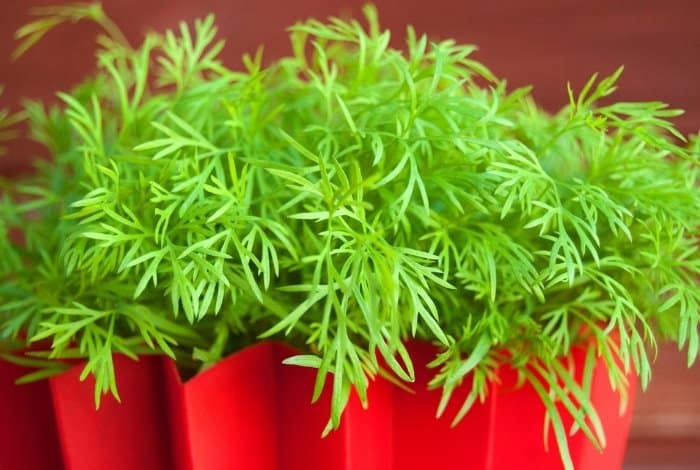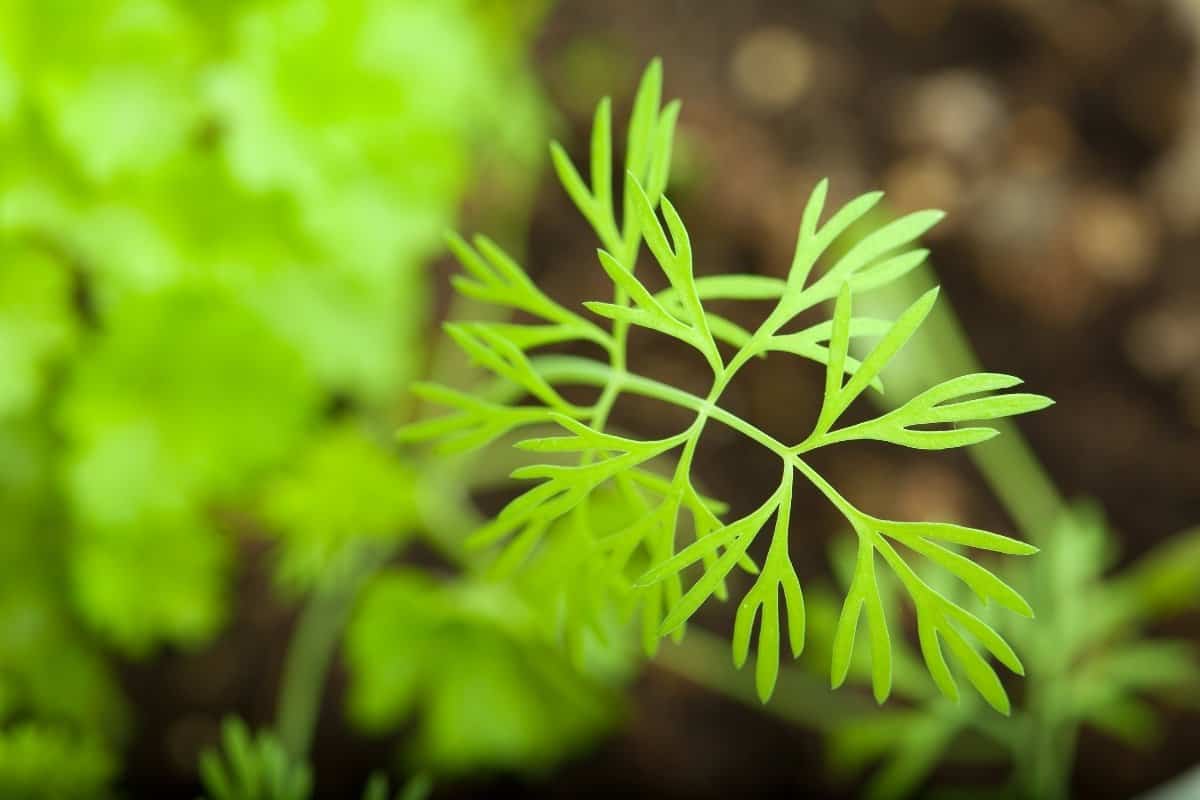Last Updated on January 19, 2022 by Tony Manhart
How much sun does dill need throughout its growing period is a question most gardeners want to find out before they can grow this fresh herb?
Dill is an easy herb to grow! Dried dill can’t compete with a fresh one in flavor. It is a very popular kitchen herb and highly aromatic.
You can grow fresh herbs all year round both indoors and outside if you use them daily for your cooking.
It thrives in warm winter areas that don’t experience a hard frost and you can plant it in autumn or winter. In cooler areas, plant it 1 or 2 weeks before the last hard frost. If you want a continuous harvest sow more every 10 days.
If you are growing dill in containers, use a deep container that can accommodate its deep roots. Remember dill will eventually grow up to 3 feet tall so its roots will go deep.
Some Facts About Dill
- It is native to the Southwestern part of Asia
- It is harvested for its leaves that are commonly used in recipes like fish, soups, and salads
- Dill seeds add flavor to food and are also used for pickling
- Dill looks similar to fennel and you will need to be careful identifying them
- It is high in calcium promoting strong bones
- Dill is a tender biennial plant that thrives in warm weather
- It is highly sensitive to frost even light freezes
- The fine leaves of dill have a delicately tangy flavor and best used fresh
How Much Sun Does Dill Need? Dill Plant Care
Dill requires a good amount of sun during its growing season as follows:
- During germination, the seeds do thrive in the spring rather than the hotter months of the summer
- If you plan to use your dill for pickling, try planting the seeds every few weeks until the middle of the summer to have a continuous supply.
- Just like Cilantro, dill enjoys a warm growing season but not hot sun. These two plants easily flower in the hottest months
- When growing dill, place it in an area that gets about 6-8 hours of sunlight a day.
- If your area is too hot, try growing your dill in a shadier spot.
- Water the plants consistently in the warmer months with only enough water not too much
Cultivation Of Dill Under The Sun
Here are a few suggestions you can use to grow your dill.
- Plant dill in the back of your flower, vegetable, or herb garden
- Sow your seeds close together to allow the plants to support each other
- Cover the seeds lightly to allow germination to take place in a week or two
- If you want a continuous crop, sow continuously every week from mid-spring to early summer.
- Do not plant dill near fennel or angelica
- Look out for caterpillars that are fond of dill. Handpick them if they become a nuisance.

Read more about edible herbs here:
Harvesting And Preserving
Dill is best used freshly cut from the garden. During the growing season, cut your dill to use fresh as you need it. If not cut, your dill will grow into seeds. Cut as often as you need until you are ready to produce seeds.
If you cut excess then you can use it at a single time, dry the rest in the microwave. Simply spread it in a single layer on a paper towel and microwave on high for 3 minutes. This home-dried dill tastes better than the dried dill you buy in the grocery store. After you microwave your dill, remove the hard stems and discard them. Store the dried dill in a clean airtight container away from light.
When the seed heads begin to form, stop cutting dill for fresh use. Allow the seeds to develop and dry completely then cut them. You will be able to remove the seeds with your fingers.
Growsun 2ft 4 Layer Herb Drying Rack Hanging Mesh Dry Net W/Green Zipper
FAQs
Can dill get too much sun?
Dill is a pretty hardy plant that can take full sun and does well in cooler weather. It also takes partial shade. It will tolerate drier conditions, but will grow better in well-drained soil with regular watering.
It’s also a good choice for a container garden, so it won’t have to compete with your other plants for space. I've seen it planted in a pot in full sun, and also directly in the garden with no problems.
Does dill grow better in sun or shade?
Dill grows best in a sunny location, but it will also do well in partial shade. It is a tender herb, and will require some protection from the cold winds that may blow at night. In the springtime, when the weather is warmer, you can cut your plants back to encourage more growth.
How do you take care of dill in the garden?
I grow dill in my garden every year. I sow seeds in early spring, and they germinate quickly. I keep them well watered and fertilized throughout the growing season. I pull weeds regularly. As soon as the flowers start to fade, I pick them and dry them. They will last a long time this way.
Should you let dill flower?
I have tried to use the dill weed flowers in salads but it doesn't have a good taste.
Where should you not plant dill?
In places that get too wet, it is accustomed to being under the sun and can withstand draught conditions.
Is dill a good companion plant?
his question has been asked in a variety of forms. I've seen it as "does dill grow well with tomatoes" or "what's the best way to grow dill?" and the like. The short answer is that it is a good companion plant for tomatoes. There are a number of reasons why dill is a good companion plant for tomatoes: Tomatoes don't do well in hot, dry weather.
Dill is a cool-weather herb and can help keep tomatoes from getting too hot and wilting. Dill is a source of sulfur, which is another nutrient that tomatoes need. Dill can help repel pests like aphids and squash bugs. Dill is also a good companion for other crops. It works well with potatoes, cabbage, beets, and spinach.
Conclusion
Sun is important to plants, we only need to understand how much each plant needs. In our case, to answer the question of how much does dill needs we have laid out this guide to show where the plant needs the sun and how much.
Gardening is much fun when you learn practically growing different plants. It is more fun when you garden with a heart that is ready to make mistakes and learn from them. Sometimes an all-perfect mindset is what we need to let go of and enjoy the journey of life.
Go ahead and start your herbs journey, and let dill be your number one herb to grow. Then share your journey with us, we will be more than glad!
Caroline is a gardener who loves to get down to the nitty–gritty of gardening. She proudly proclaims herself as a ‘dirt worshipper‘ and can often be found deep in the garden, covered in soil and singing to her plants. As a self–proclaimed ‘plant whisperer‘, Caroline believes that plants need love and attention just like any other living thing, and she loves to give them both. When she‘s not tending to her garden, you can often find her researching the latest gardening trends, or teaching others how to make their gardens thrive



